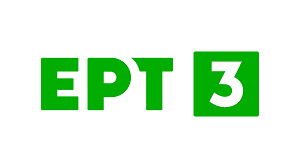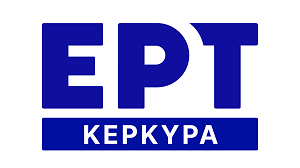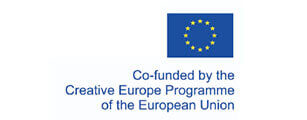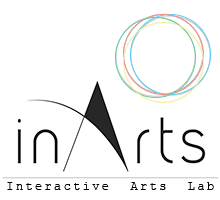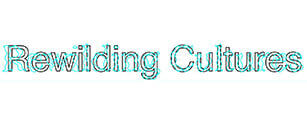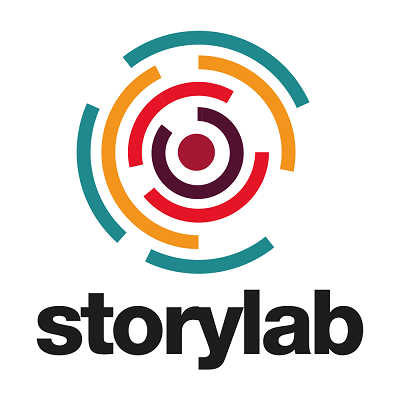Summary
In our multicultural society, more and more students of diverse linguistic backgrounds attend schools in their respective host countries. At the same time, there has been a growing research interest in the learning process of students with dyslexia. Nowadays, educational technology has been enhanced with cutting-edge applications in order to support both bilingual students and students with dyslexia. However, the question we pose is “what about bilingual students diagnosed with dyslexia”? This paper presents the pedagogical affordances of augmented reality applications for bilingual students with dyslexia.
Theoretical background - Objectives
Bilingual students are a group that forms a significant component of special and inclusive education. Throughout time numerous definitions have been given to make the field clear. The main reason is the various sociocultural profiles of these individuals and some specific criteria such as age, skills, the balance between the two languages and the dynamics of language use. For instance, equal knowledge of two languages can be described as balanced bilingualism. Another example is early bilingualism when someone consolidates a second language during early childhood. Today, a bilingual can be characterized as any person who is capable of communicating in writing or orally or can understand a second language at any linguistic level and any age [1]. Another interesting group of students struggling to acquire language skills are students with special learning difficulties. Specific learning difficulties, including dyslexia, is a systematic study field of the difficulties faced by students with special educational needs. The cerebral function of a dyslexic individual and in a more general sense a dyslexic student has a unique print and operates differently from a standard point of reference. Dyslexia is a highly individual condition and complicated and the diversity presented by dyslexic students necessitates instructional approaches that allow for the differentiation of instruction [2].
Modern schools include students of different linguistic profiles, but also different learning needs and preferences. At the same time, bilingual students who have been diagnosed with dyslexia attend diverse classrooms, which burdens learning difficulties. Diversity is the result of the international movement for inclusion. However, although the conditions for inclusion have matured to the extent that diversity is at least acceptable, teachers encounter several difficulties in differentiating educational materials [3]. Research has shown that these difficulties mainly refer to concerns about classroom management, unilateral utilization of the school textbook resulting from pressure to cover the subjects assigned by the curriculum, lack of equipment and above all inefficient training that results in teachers’ uncertainty to implement alternative teaching methods.
To address the difficulties of struggling students, the multisensory approach is considered to be a unique instructional strategy based on the assumption that individuals learn more easily and less tiringly if they are taught using more than one sense (modality). The use of structured multisensory instruction dates back to the late 1930s to the original Orton-Gillingham approach. Orton's neurological research suggested a systematic, multisensory approach to help students read, spell, and write. Multisensory educational programs and their techniques meet the criteria set by the principles of Universal Design Learning (UDL)[4], as well as Differentiated Instruction (DI). In recent years, educational technology has provided solutions for teaching children with and without learning difficulties. In exploring the features of educational technology to overcome a variety of learning barriers, it was found that Augmented Reality (AR) can solve several difficulties for teachers when trying to develop low-cost educational materials as it brings together unique educational qualities [2]. Azuma (1997) defined AR as the technology that enables the user to see the real world simultaneously with virtual objects that overlay and/or reconstruct the real world. There are eight key AR educational affordances:
1. Collaboration
2. Connectivity
3. Student-centred
4. Community
5. Exploration
6. Shared knowledge
7. Multisensory experience
8. Authenticity
AR has been implemented quickly and easily thanks to mobile devices equipped with cameras that record images of the real environment [6]. Reviewing the literature to design AR applications, we found that the most important accessibility difficulties encountered by individuals with dyslexia, when navigating digital materials, are:
• unclear and confusing layout of pages
• confusing and disorienting navigation mechanisms
• inappropriate use of colours and poor contrast between content and background
• graphics and text too small
• complicated language or terminology
Given that the literature has concluded that AR supports teachers' willingness to meet their students' learning needs, the purpose of this paper is to examine whether AR affordances can contribute to the learning of bilingual students with dyslexia. In this context, the following research question was asked.
RQ: Could AR applications support bilingual students with dyslexia?
Method
The methodology followed for this work was a meta-analysis of previous studies literature review. During the review, both the characteristics of bilingual students and students with dyslexia were studied. Also, the difficulties faced by students with dyslexia in navigating digital environments were addressed.
Results
This paper aimed to examine whether AR affordances can contribute to the learning of bilingual students with dyslexia. To this end, general difficulties in using technology applications were Examined and recorded. The results of research on navigation problems that are confronted by dyslexic students highlighted a specific list. Notably, issues were identified with the use of search boxes, site maps, navigation trails, site indexes, navigation menus and last but not least back and forward buttons. Therefore, to design accessible and therefore inclusive educational materials it is necessary to incorporate subtitles, interactive transcripts, easily read text, fonts/backgrounds, symbols, videos with text navigation, pictograms and audio description using human voice [7].
The latest research has demonstrated that AR applications play an important role in achieving literacy because they integrate the aforementioned features based on basic principles of learning theories and additionally allow for English as a Second Language (ESL)/ English as a Foreign Language (EFL) students and in our case Greek as a Second Language (GSL)/Greek as a Foreign Language (GFL) to be accommodated [8,9]. Moreover, it seems that AR motivates students to improve themselves, due to the transformation of traditional teaching methodology to embrace a fresh approach and attitude [10]. Consequently, AR applications facilitate teaching the host country's language to foreign students [8]. The UDL principles for designing AR educational environments to enable effective learning of bilingual students with dyslexia to entail providing:
• flexible ways of representing information (e.g., text, image, sound, video)
• flexible means of action and expression (e.g., pedagogical agents, feedback)
• flexible ways of motivating learning (e.g., through adaptation and personalisation of digital learning environments
Conclusion
Designing digital learning environments accessible to bilingual individuals with dyslexia should contain information that is represented in different, appropriate sensory channels using a combination of media. Multimodal interaction, simultaneously harnessing all available human-computer communication channels to ensure accessibility to users with different abilities and skills, is human-centred. AR brings together all these features and can support the design of inclusive learning environments enhancing collaboration between all students regardless of their learning profile.
References
[1] E. Griva, A.G. Stamou, Researching bilingualism in the school context: Perspectives of teachers, students and immigrant parents, Thessaloniki: Kyriakidis, 2014.
[2] P. Kaimara, E. Kokkinomilioti, M. Sdrolia, I. Deliyannis, A. Oikonomou, K. Aggelakos, Developing an interactive multisensory platform of augmented reality and game scenario for the presentation of historical content on children with special learning difficulties, in: M. Kanellopoulou-Boti (Ed.), Child Inf. Searches Hist. Regul. Cult., Athens: Ocelotos, 2018: pp. 484–497.
[3] P. Kaimara, I. Deliyannis, A. Oikonomou, Content Design for Inclusive Educational Environments, in: L. Daniela (Ed.), Incl. Digit. Educ., Springer Cham, 2022: pp. 97–121. https://doi.org/10.1007/978-3-031-14775-3_6.
[4] A. Meyer, D.H. Rose, D. Gordon, CAST: Universal Design for Learning: Theory & Practice, CAST Prof. Publ. (2014). http://udltheorypractice.cast.org/home?5.
[5] R.T. Azuma, A Survey of Augmented Reality, Presence Teleoperators Virtual Environ. 6 (1997) 355–385. https://doi.org/10.1162/pres.1997.6.4.355.
[6] V. Komianos, Immersive Applications in Museums: An Analysis of the Use of XR Technologies and the Provided Functionality Based on Systematic Literature Review, JOIV Int. J. Informatics Vis. 6 (2022) 60. https://doi.org/10.30630/joiv.6.1.708.
[7] V. Kourbetis, K. Boukouras, Accessible Open Educational Resources for Students with Disabilities in Greece: They are Open to the Deaf, in: Lect. Notes Comput. Sci. (Including Subser. Lect. Notes Artif. Intell. Lect. Notes Bioinformatics), 2014: pp. 349–357. https://doi.org/10.1007/978-3-319-07440-5_32.
[8] G.R. Ruiz, Augmented Reality as an Innovative Tool for the Training of Bilingual Education Teachers in Primary Schools, in: J.L.E. Chichón, F.Z. Martínez (Eds.), Handb. Res. Train. Teach. Biling. Educ. Prim. Sch., IGI Global, 2023: pp. 321–350. https://doi.org/10.4018/978-1-6684-6179-2.ch014.
[9] P. Kaimara, Design and Development of Interactive Edutainment Systems in Inclusive Education: Interactive educational programs and audiovisual arts as a bridge between typically developing children and children with special educational needs and/or disabilities, PhD Thesis, Corfu: Audio and Visual Arts, Ionian University, Corfu, 2022. https://www.didaktorika.gr/eadd/handle/10442/52582.
[10] P. Kaimara, E. Renessi, S. Papadopoulos, I. Deliyannis, A. Dimitra, Fairy tale meets ICT: Vitalizing professions of the past, in: T.H. Kotopoulos, V. Nanou (Eds.), 3rd Int. Conf. Creat. Writing, 6-8 Oct. 2017, Corfu, Greece, Postgraduate Programme ‘Creative Writing’ - University of Western Macedonia, 2018: pp. 292–318. http://cwconference.web.uowm.gr/archives/3rd_cw_conference_2017.pdf.
Polyxeni Kaimara holds a PhD in Educational Psychology & Educational Technology from the Ionian University (Department of Audio and Visual Arts)in Corfu, Greece, a MSc in Developmental and School Psychology and a BSc in Psychology from the Aristotle University of Thessaloniki (Department of Psychology) in Thessaloniki, Greece, a MSc in Public Health from the University of West Attica (Department of Public Health Policy) in Athens, Greece and a BSc in Counseling and Guidance from the Higher School of Pedagogical and Technological Education (ASPAITE) in Thessaloniki, Greece. She is also a Certified Trainer and Assessor of the Greek National Organization for the Certification of Qualifications & Vocational Guidance and a Certified Trainer of the National Centre for Public Administration and Local Government. She is currently a post-doc researcher at the Department of Audio and Visual Arts (Ionian University). She has teaching experience at the University of Western Macedonia and Ionian University. She works as a psychologist in the psychiatric sector and educational centres for people with disabilities at the Greek Ministry of Health. She is a co-author of numerous papers and book chapters and has presented research works at international conferences. Her research interests focus on the design and evaluation of educational systems and games for students with special educational needs and inclusive education.
https://scholar.google.com/citations?user=rVcJ1mUAAAAJ&hl=el
Back



